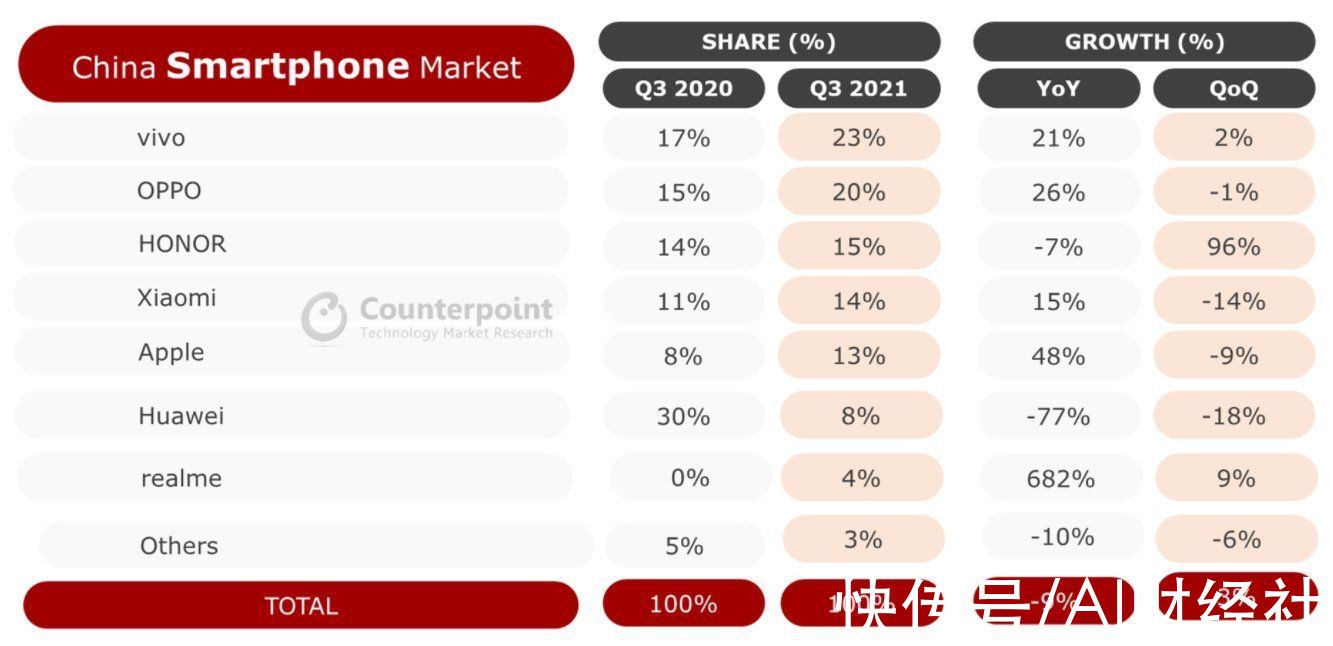е®қеү‘й”Ӣд»ҺзЈЁз әеҮәпјҢжў…иҠұйҰҷиҮӘиӢҰеҜ’жқҘгҖӮиҝҷзҜҮж–Үз« дё»иҰҒи®Іиҝ°Flutter дё“йўҳ101 дҪ•дёә Flutter Elements пјҹ#yydsе№Іиҙ§зӣҳзӮ№#зӣёе…ізҡ„зҹҘиҜҶпјҢеёҢжңӣиғҪдёәдҪ жҸҗдҫӣеё®еҠ©гҖӮ
е°ҸиҸңеүҚж®өж—¶й—ҙз®ҖеҚ•дәҶи§ЈдәҶдёҖдёӢ Widget зҡ„зӣёе…ізҹҘиҜҶпјҢе…¶дёӯ Widget жҳҜ immutable дёҚеҸҜеҸҳзҡ„пјҢиҖҢ Widget жҳҜеҰӮдҪ•еҒҡеҲ°жӣҙж–°йҮҚз»ҳзҡ„пјҢиҝҷе°ұзҰ»дёҚејҖ Element е’Ң RenderObjectпјӣе°ҸиҸңз®ҖеҚ•дәҶи§ЈдёҖдёӢ Element зҡ„зӣёе…іе°ҸзҹҘиҜҶпјӣ

ж–Үз« еӣҫзүҮ
Element Element жҳҜ Widget еңЁ UI ж ‘е…·дҪ“дҪҚзҪ®зҡ„дёҖдёӘе®һдҫӢеҢ–еҜ№иұЎпјӣUI View еңЁ Element еұӮзә§з»“жһ„дёӯдјҡжһ„е»әдёҖдёӘзңҹе®һзҡ„ Element TreeпјҢжҳҜзңҹжӯЈзҡ„и§Ҷеӣҫж ‘з»“жһ„пјӣElement дҪңдёә Widget е’Ң RenderObject д№Ӣй—ҙзҡ„еҚҸи°ғиҖ…пјҢе№¶ж №жҚ® Widget зҡ„еҸҳеҢ–жқҘе®ҢжҲҗз»“зӮ№зҡ„еўһеҲ ж”№зҡ„ж“ҚдҪңпјӣ

ж–Үз« еӣҫзүҮ
жәҗз ҒеҲҶжһҗ
Element жүҖж¶үеҸҠжәҗз Ғиҫғй•ҝпјҢе°ҸиҸңд»…й’ҲеҜ№е…·дҪ“зҡ„ж–№жі•е’Ңз”ҹе‘Ҫе‘ЁжңҹиҝӣиЎҢеӯҰд№ пјӣ
з”ҹе‘Ҫе‘Ёжңҹ
enum _ElementLifecycle
initial,
active,
inactive,
defunct,
Element зҡ„з”ҹе‘Ҫе‘Ёжңҹдё»иҰҒеҢ…жӢ¬еҰӮдёӢеҮ еҲҶпјҢеҲҶеҲ«жҳҜ initial еҲқе§ӢеҢ–пјҢactive жҙ»и·ғзҠ¶жҖҒпјҢinactive дёҚжҙ»и·ғзҠ¶жҖҒд»ҘеҸҠ defunct еӨұж•ҲзҠ¶жҖҒпјӣ
й’ҲеҜ№ж–№жі• 1. createElement
Element(Widget widget) : assert(widget != null), _widget = widget;
еҲӣе»әдёҖдёӘдҪҝз”ЁжҢҮе®ҡ Widget дҪңдёәе…¶й…ҚзҪ®зҡ„ ElementпјӣйҖҡиҝҮ Widget и°ғз”Ё Widget.createElement жқҘеҲӣе»ә ElementпјҢдҪңдёә Element зҡ„еҲқе§ӢдҪҚзҪ®пјӣ
2. mount
@mustCallSuper
void mount(Element parent, dynamic newSlot)
...
_parent = parent;
_slot = newSlot;
_depth = _parent != null ? _parent.depth + 1 : 1;
_active = true;
if (parent != null)
_owner = parent.owner;
if (widget.key is GlobalKey)
final GlobalKey key = widget.key;
key._register(this);
_updateInheritance();
mount() дјҡе°Ҷж–°еҲӣе»әзҡ„ Element ж·»еҠ еҲ°жҢҮе®ҡзҡ„зҲ¶зә§ slot жҸ’ж§Ҫж ‘дёӯпјҢйҖҡиҝҮи°ғз”Ё attachRenderObject ж·»еҠ еҲ°жёІжҹ“ж ‘дёҠпјӣ
3. update
@protected
Element updateChild(Element child, Widget newWidget, dynamic newSlot)
if (newWidget == null)
if (child != null) deactivateChild(child);
return null;
if (child != null)
if (child.widget == newWidget)
if (child.slot != newSlot) updateSlotForChild(child, newSlot);
return child;
if (Widget.canUpdate(child.widget, newWidget))
if (child.slot != newSlot) updateSlotForChild(child, newSlot);
child.update(newWidget);
return child;
deactivateChild(child);
assert(child._parent == null);
return inflateWidget(newWidget, newSlot);
|
updateChild жҳҜ Element зҡ„ж ёеҝғж–№жі•пјҢжҜҸеҪ“йңҖиҰҒеўһеҠ пјҢдҝ®ж”№пјҢеҲ йҷӨеӯҗ child ж—¶йғҪдјҡи°ғз”Ёпјӣдё»иҰҒж №жҚ® Widget зҡ„еҸҳеҢ–з”ЁдәҺ Element зҡ„жӣҙж–°пјҢиҝӣиҖҢжӣҙж–° UI ж ‘пјӣ |
newWidget == null | newWidget != null | |
|---|---|---|---|
| child == null | Returns null. | Returns new [Element]. | |
| child != null | Old child is removed, returns null. | Old child updated if possible, returns child or new [Element]. |
- еҪ“жӣҙж–°еҗҺзҡ„ Widget дёә null ж—¶пјҢеҜ№еә”зҡ„еӯҗиҠӮзӮ№е·Із»Ҹ移йҷӨпјҢеҰӮжһңеҪ“еүҚ child дёҚдёә nullпјҢеҲҷзӣҙжҺҘ remove жҺүпјӣ
- еҪ“жӣҙж–°еҗҺзҡ„ Widget дёҚдёә null дё”еҪ“еүҚ child дёә null ж—¶пјҢиҜҙжҳҺж–° Widget жҳҜж–°еҲӣе»әзҡ„пјҢеҲҷ inflateWidget еҲӣе»әеӯҗиҠӮзӮ№пјӣ
- еҪ“жӣҙж–°еҗҺзҡ„ Widget дёҚдёә null дё”еҪ“еүҚ child д№ҹдёҚдёә null иҜҘиҠӮзӮ№еӯҳеңЁж—¶пјҢиӢҘ child.widget == newWidget иҜҙжҳҺеӯҗиҠӮзӮ№еүҚеҗҺжңӘеҸ‘з”ҹеҸҳеҢ–пјҢиӢҘ child.slot != newSlot иҜҙжҳҺеӯҗиҠӮзӮ№еңЁе…„ејҹз»“зӮ№й—ҙ移еҠЁдәҶдҪҚзҪ®пјҢжӯӨж—¶ updateSlotForChild жӣҙж–°иҠӮзӮ№дҪҚзҪ®пјӣеҗҰеҲҷзӣҙжҺҘиҝ”еӣһеӯҗиҠӮзӮ№пјӣ
- еҪ“жӣҙж–°еҗҺзҡ„ Widget дёҚдёә null дё”еҪ“еүҚ child д№ҹдёҚдёә null иҜҘиҠӮзӮ№еӯҳеңЁж—¶пјҢиӢҘ Widget.canUpdate дёә true иҜҙжҳҺеҸҜд»Ҙз”Ё newWidget дҝ®ж”№еӯҗиҠӮзӮ№пјҢзӣҙжҺҘи°ғз”Ё update жӣҙж–°еҚіеҸҜпјӣеҗҰеҲҷе…Ҳе°ҶеӯҗиҠӮзӮ№з§»йҷӨеҶҚйҖҡиҝҮ newWidget еҲӣе»әж–°зҡ„еӯҗиҠӮзӮ№пјӣе…¶дёӯ canUpdate дё»иҰҒжҳҜеҲӨж–ӯж–°ж—§ Widget зҡ„ key е’Ң runtimeType жҳҜеҗҰдёҖиҮҙпјӣ
@protected
void deactivateChild(Element child)
child._parent = null;
child.detachRenderObject();
owner._inactiveElements.add(child);
// this eventually calls child.deactivate()
deactivateChild е°ҶжҢҮе®ҡ Element е·ІеҲ°йқһжҙ»еҠЁ Element еҲ—иЎЁдёӯпјҢ并е°ҶжёІжҹ“еҜ№иұЎд»ҺжёІжҹ“ж ‘дёӯ移йҷӨпјӣиҜҘж–№жі•еҸҜд»Ҙйҳ»жӯў Element жҲҗдёәе…¶еӯҗзұ»пјӣ
5. activate
@mustCallSuper
void activate()
final bool hadDependencies = (_dependencies != null &
&
_dependencies.isNotEmpty) || _hadUnsatisfiedDependencies;
_active = true;
_dependencies?.clear();
_hadUnsatisfiedDependencies = false;
_updateInheritance();
if (_dirty)
owner.scheduleBuildFor(this);
if (hadDependencies)
didChangeDependencies();
activate() дёәе°Ҷ Element йҮҚж–°еҗҲ并еҲ°ж ‘дёҠж—¶пјҢжЎҶжһ¶дјҡд»Һ inactive йқһжҙ»и·ғ Element еҲ—иЎЁдёӯеҲ йҷӨиҜҘе…ғзҙ пјҢдё”иҜҘе…ғзҙ и°ғз”Ё activate 并е°Ҷ Element зҡ„жёІжҹ“еҜ№иұЎж·»еҠ еҲ°жёІжҹ“ж ‘дёҠпјӣ
6. unmount
@mustCallSuper
void unmount()
if (widget.key is GlobalKey)
final GlobalKey key = widget.key;
key._unregister(this);
unmount() дёәеҪ“жЎҶжһ¶ж°ёиҝңдёҚдјҡйҮҚж–°жҝҖжҙ»ж—¶и°ғз”ЁпјӣдёәдәҶйҒҝе…ҚеңЁдёҖж¬ЎеҠЁз”»жү§иЎҢиҝҮзЁӢдёӯеҸҚеӨҚеҲӣе»әпјҢ移йҷӨзү№е®ҡ Element ж—¶пјҢйқһжҙ»и·ғзҠ¶жҖҒзҡ„ Element йғҪдјҡеңЁеҪ“еүҚеҠЁз”»иҝҮзЁӢжңҖеҗҺдёҖеё§е…Ҳдҝқз•ҷпјҢеҰӮжһңеҲ°еҠЁз”»з»“жқҹеҗҺиҝҳжңӘеҸҳжҲҗжҙ»и·ғзҠ¶жҖҒпјҢеҲҷи°ғз”Ё unmount() е°ҶиҜҘ Element еҪ»еә•з§»йҷӨпјӣ
еҜ№еә”е…ізі»
- Widget.createElement дёә initial д»Һж— еҲ°жңүзҡ„еҲқе§ӢеҢ–з”ҹе‘Ҫе‘Ёжңҹпјӣ
- mount дёә initial еҲқе§ӢеҢ–зҠ¶жҖҒеҲ° active жҙ»и·ғзҠ¶жҖҒеҲ°з”ҹе‘Ҫе‘ЁжңҹиҝҮжёЎпјӣ
- update еҸӘжңүеңЁ active жҙ»и·ғзҠ¶жҖҒж—¶жүҚдјҡи°ғз”Ёпјӣ
- deactivate дёә active жҙ»и·ғзҠ¶жҖҒеҲ° inactive йқһжҙ»и·ғзҠ¶жҖҒз”ҹе‘Ҫе‘ЁжңҹиҝҮжёЎпјӣ
- activate дёә inactive йқһжҙ»и·ғзҠ¶жҖҒеҲ° active жҙ»и·ғзҠ¶жҖҒзҡ„з”ҹе‘Ҫе‘ЁжңҹиҝҮжёЎпјӣ
- unmount дёә inactive йқһжҙ»еҠЁзҠ¶жҖҒеҲ° defunct еӨұж•ҲзҠ¶жҖҒз”ҹе‘Ҫе‘Ёжңҹзҡ„иҝҮжёЎпјӣ
ComponentElement ComponentElement дёәз»„еҗҲзұ» ElementпјҢдё»иҰҒеҢ…жӢ¬еҰӮдёӢ StatelessElement / StatefulElement / ProxyElement еӯҗзұ»пјӣе…¶дёӯеҗ„ Element йғҪжҳҜдёҺ Widget еҜ№еә”зҡ„пјӣ
StatelessElement
class StatelessElement extends ComponentElement
StatelessElement(StatelessWidget widget) : super(widget);
@override
StatelessWidget get widget =>
super.widget;
@override
Widget build() =>
widget.build(this);
@override
void update(StatelessWidget newWidget)
super.update(newWidget);
assert(widget == newWidget);
_dirty = true;
rebuild();
StatelessElement зӣёеҜ№жҜ”иҫғз®ҖеҚ•пјҢдё»иҰҒжҳҜйҮҚеҶҷ update() еңЁйңҖиҰҒеҸ‘з”ҹеҸҳжӣҙж—¶ rebuild() еҚіеҸҜпјӣ
StatefulElement
@override
void update(StatefulWidget newWidget)
super.update(newWidget);
final StatefulWidget oldWidget = _state._widget;
_dirty = true;
_state._widget = widget;
try
_debugSetAllowIgnoredCallsToMarkNeedsBuild(true);
final dynamic debugCheckForReturnedFuture = _state.didUpdateWidget(oldWidget) as dynamic;
finally
_debugSetAllowIgnoredCallsToMarkNeedsBuild(false);
rebuild();
StatefulElement жҳҜеҜ№еә” StatefulWidget зҡ„пјҢеҢ…жӢ¬е®Ңж•ҙзҡ„ Element з”ҹе‘Ҫе‘ЁжңҹпјҢе…¶дёӯеңЁжӣҙж–°ж—¶дјҡжӣҙж–° State е’Ң rebuild()пјӣ
ProxyElement
abstract class ProxyElement extends ComponentElement
ProxyElement(ProxyWidget widget) : super(widget);
@override
ProxyWidget get widget =>
super.widget;
@override
Widget build() =>
widget.child;
@override
void update(ProxyWidget newWidget)
final ProxyWidget oldWidget = widget;
assert(widget != null);
assert(widget != newWidget);
super.update(newWidget);
assert(widget == newWidget);
updated(oldWidget);
_dirty = true;
rebuild();
@protected
void updated(covariant ProxyWidget oldWidget)
notifyClients(oldWidget);
@protected
void notifyClients(covariant ProxyWidget oldWidget);
ProxyElement дҪңдёәдёҖдёӘжҠҪиұЎзұ»пјҢе…¶еӯҗзұ»жҳҜ ParentDataElement е’Ң InheritedElementпјӣеҪ“ Widget жӣҙж–°ж—¶и°ғз”Ё update()пјӣnotifyClients() з”ЁдәҺж–°ж—§ Widget зЎ®е®һе·Іж”№еҸҳж—¶и°ғз”Ёпјӣ
RenderObjectElementгҖҗFlutter дё“йўҳ101 дҪ•дёә Flutter Elements пјҲ#yydsе№Іиҙ§зӣҳзӮ№#пјүгҖ‘ RenderObjectElement дёәжёІжҹ“зұ»еһӢ Element еҜ№еә”зҡ„жҳҜ RenderObjectWidgetпјӣRenderObjectElement дҪңдёәжҠҪиұЎзұ»д№ҹ继жүҝдәҶ Element жүҖжңүзҡ„з”ҹе‘Ҫе‘Ёжңҹж–№жі•пјӣ
еӨ§еӨҡж•°зҡ„ RenderObjectElement йғҪеҸӘеҜ№еә”дёҖдёӘ RenderObject еҚіеҸӘжңүдёҖдёӘеӯҗиҠӮзӮ№пјҢдҫӢеҰӮ RootRenderObjectElement / SingleChildRenderObjectElementпјӣдҪҶд№ҹжңүзү№ж®Ҡзҡ„пјҢеҰӮ LeafRenderObjectElement еӯҗзұ»жІЎжңүеӯҗиҠӮзӮ№пјҢд»ҘеҸҠ MultiChildRenderObjectElement еӯҗзұ»еҸҜд»ҘжңүеӨҡдёӘеӯҗиҠӮпјӣ
Element дҪңдёә Widget е’Ң RenderObject зҡ„еҚҸдҪңиҖ…иө·еҲ°дәҶжүҝдёҠеҗҜдёӢзҡ„е·ҰеҸіпјӣе°ҸиҸңеҜ№дјҡеңЁдёӢдёҖзҜҮз®ҖеҚ•еӯҰд№ RenderObjectпјӣе°ҸиҸңеҜ№жәҗз Ғзҡ„зҗҶи§ЈиҝҳдёҚеӨҹж·ұе…ҘпјҢеҰӮжңүй”ҷиҜҜпјҢиҜ·еӨҡеӨҡжҢҮеҜјпјҒ
жҺЁиҚҗйҳ…иҜ»
- жү©еұ•433е…Ҷиө«е°„йў‘еҸ‘е°„жЁЎеқ—зҡ„дј иҫ“иҢғеӣҙ
- #yydsе№Іиҙ§зӣҳзӮ№# Springж ёеҝғд№ӢжҺ§еҲ¶еҸҚиҪ¬(IOC)
- и·Ҝз”ұеҹәзЎҖд№ӢOSPFзҡ„зӣ‘жөӢе’Ңи°ғиҜ•
- ThinkPHPдёҠж¬Ўе’ҢдёӢиҪҪе°ҒиЈ…
- Cilium v1.10.6 е®үиЈ…йғЁзҪІ
- з®—жі•йўҳжҜҸж—ҘдёҖз»ғ---第36еӨ©пјҲиҝһз»ӯеӯҗж•°з»„зҡ„жңҖеӨ§е’Ңпјү
- дә‘еҺҹз”ҹж—¶д»Јзҡ„жҗңзҙўжңҚеҠЎз®—еҠӣз®ЎзҗҶ
- javaScriptдёӯMathеҶ…зҪ®еҜ№иұЎеҹәжң¬ж–№жі•е…Ҙй—Ё
- Redis зҡ„зј–иҜ‘е®үиЈ…еҸҠеӨҡз§Қж–№ејҸеҗҜеҠЁ










